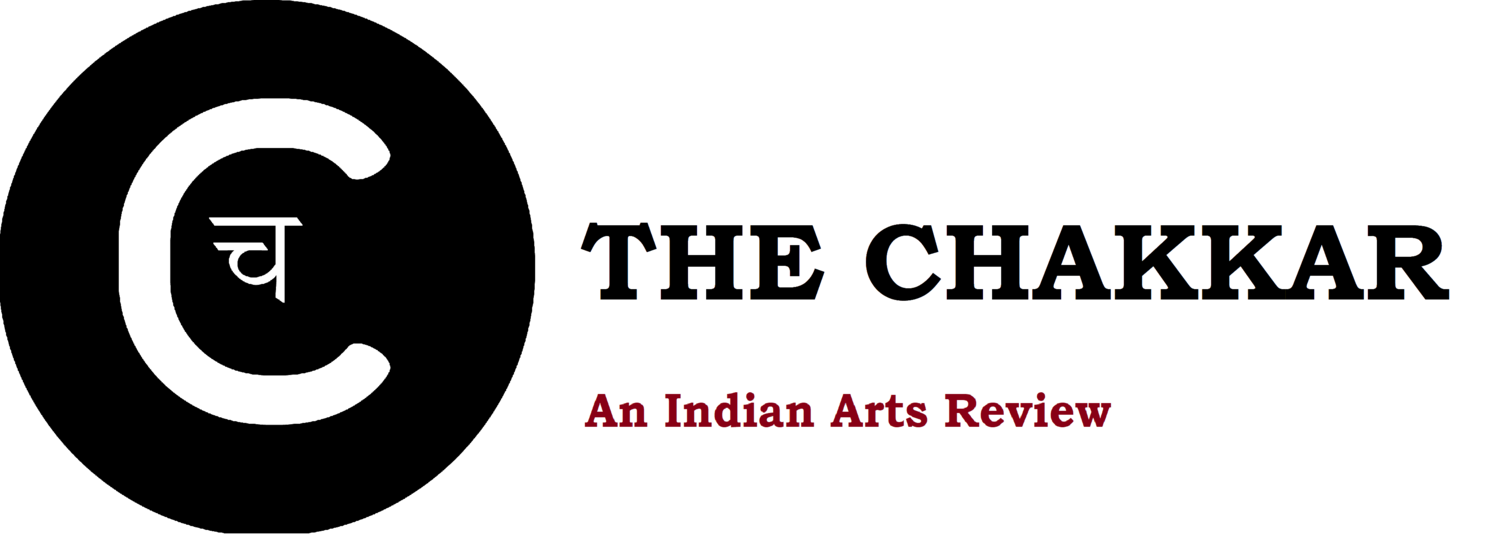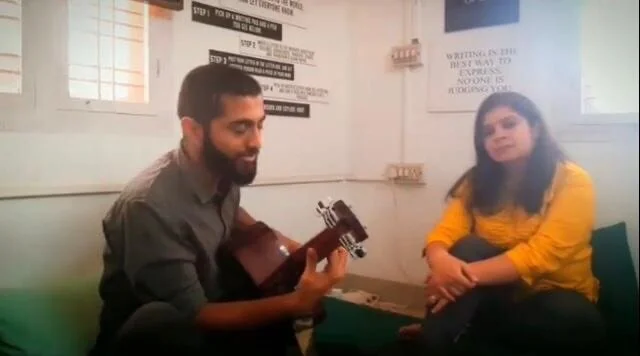Positive Vibrations
The Svaram - Musical Instruments & Research campus in Kotakarai.
The ‘magic of sound’ has an inherent healing power. Akhila Damodaran reports why many Indians are seeking music therapy to cope with the stress of a particularly painful year.
“One good thing about music,” sang Bob Marley in “Trenchtown Rock,” “When it hits, you feel no pain. So hit me with music, hit me with music.”
Like a lot of close family members in the face of stress in this unprecedented year, a couple in Bengaluru were having troubles in their marriage during the lockdown—communication issues, and difficulty spending time together due to a hectic corporate schedule. They decided to seek professional help, and as recommended by the psychotherapist, they began to take part in music therapy in July.
Music therapy sessions allow clinical use of musical interventions to improve clients' quality of life through development in cognitive, motor, emotional, communicative, social, sensory, and educational domains. These experiences include improvisation, re-creation, composition, receptive methods, and discussion of music.
They started attending the sessions together at Inspiron, a psychological well-being centre in Bengaluru, once a fortnight for 45 minutes each. They got a safe space to express their emotions through the use of songs, sounds frequencies and rhythm.
“Music is sound, and sound is rooted in vibration,” says Shivani Sakhrani, counselling psychologist at Inspiron. “Sound vibrations are absorbed through the body and can help ease stress and allow the body to relax. Known as vibroacoustic therapy, this intervention was used with low frequency sound—similar to a low rumble—that produce vibrations which are applied directly to the body.”
A 30-hertz vibration was played for one minute for the couple, followed by a one-minute break, alternating the two. “During the vibroacoustic therapy, the couple lay together on a mat with speakers nearby that transmitted these vibrations at specific computer-generated frequencies,” says Sakhrani. “These vibrations were felt by the couple in the heart area. This aimed at helping the couple relax their body as the BPM of heart tends to mirror the BPM of the music through the vibrations.”
A music therapy session at Inspiron in Bengaluru.
The lockdown induced by COVID-19 forced millions of people to be confined in their homes—often, for months on end. Priyanka MB, founder and director of Inspiron, said that there has been a rise in people seeking professional help by 40 per cent during the lockdown. Most people who are seeking support are adults working in the corporate sector struggling to balance their work and family life. “Children are also being encouraged by their parents to seek therapy to express their confusion, fear and frustration regarding the current pandemic situation," she adds.
Priyanka says that the music therapy sessions allow clinical use of musical interventions to improve clients' quality of life through development in cognitive, motor, emotional, communicative, social, sensory, and educational domains. These experiences include improvisation, re-creation, composition, receptive methods, and discussion of music. They are tailor-made through the use of binaural beats keeping the needs of a client in mind.
She explains:
Binaural beats in the delta (1 to 4 Hz) range are associated with deep sleep and relaxation.
Binaural beats in the theta (4 to 8 Hz) range are linked to REM sleep, reduced anxiety, relaxation, as well as meditative and creative states.
Beats in the alpha frequencies (8 to 13 Hz) can encourage relaxation, promote positivity, and decrease anxiety.
Beats in the lower beta frequencies (14 to 30 Hz) increase concentration and alertness, problem-solving, and improved memory.
The Subramaniam Academy of Performing Arts (SaPa) founded by India’s violin icon Dr L. Subramaniam and renowned singer Kavita Krishnamurti Subramaniam in 2007, has been helping children cope with uncertainty and lack of community time using music as a tool. The in-school course material has been adapted to help fulfil students' social-emotional learning needs.
Bindu Subramaniam, founding director of the school says, “Children were a bit excited at the beginning of the lockdown as it was something new for them and they were getting to try out the online classes. As the lockdown advanced, the fatigue soaked in. Children started getting restless as they were unable to meet their friends and noticed a change in their routine. We create a positive environment with our sessions where children can express what they feel. We acknowledge their feelings. We organise sessions depending on the age group. We choose our original songs or Indian, Afro, western and other international music during the session. Each child gets a chance to express how they are feeling that moment. It doesn't matter what genre of music we use in our sessions. Exposure to music is the key,” she says.
Manasi Prasad, director of Indian Music Experience museum in Bengaluru believes that any kind of music, especially classical, has the power to heal. The museum also conducts music classes online. Manasi says, "Learning music is therapy in itself. When a student participates in the class, he forgets everything else around him. The focus is only on music. Classical music especially has a very calming and soothing effect. It has more depth and power to help us cope with our mental health issues."
Aurelio C. Hammer at Svaram in Kotakarai.
Music is a source of inspiration, says musician Raghu Dixit. "Music has therapeutic effects. It can relax you, inspire you, morph your sadness and boost your confidence. There are several instances where medical practitioners have used music during surgery. I get several messages from my fans that my music has helped them during their darkest times.”
Dixit nearly lost his voice this year after he tired his vocal cords. Doctors had told him that he wouldn't be able to sing the way he used to. "I was devastated on hearing the news that I would never recover,” he says. “I started meditating and visualising in my mind that I am getting my voice again. I used to sing in high pitch. I reduced the pitch range of my guitar by half notes and put less stress on my voice. And, now, I can sing in my original pitch. Such is the power of mind and music.”
Several international summits and workshops are also being conducted online during the lockdown to study more about music and sound therapy. The key to healing is conscious listening—listening to the sounds around us including that of our thoughts—says Aurelio C Hammer, creative director of Svaram - Musical instruments and Research. Svaram is an organisation that explores the ‘magic of sound’ in Puducherry. Hammer says, “Music is the most important companion in need. People use music to boost energy. It inspires them, relaxes them and rejuvenates them. Music therapy is especially now gaining popularity in India with many clinics and psychological well-being centres using it.” Hammer, who studies, researches and works in the field of music therapy, believes music opens the body to its inherent healing power.
“Music is the most important companion in need. People use music to boost energy. It inspires them, relaxes them and rejuvenates them. Music therapy is especially now gaining popularity in India with many clinics and psychological well-being centres.”
Besides conducting therapy sessions, the organisation also offers a specifically created selection of instruments—such as swinging chimes, sound wings, and sound ray—for sound healing.
However, Hammer says playing an instrument or singing yourself can be more impactful than just listening to music. Samar Puri, the lead guitarist of the Indie pop band SANAM agrees. During the lockdown, Puri took to meditation music. He says creating the music is in itself a meditative process. “I can spend hours doing it. It keeps me calm, peaceful and helps me forget what's happening in the outside world. I get lost in the music and get closer to my inner self,” says Puri. He adds that he started listening to a meditation or relaxation music during the lockdown. “It keeps me calm and peaceful. I then worked and released my first relaxing guitar music ‘Slow Down’ on my Instagram page and got great feedback.” Puri later met Sujatha Rajashekar who conceptualises meditation music for the YouTube channel ‘Whispers of the Universe’ and collaborated with her to release “Air Element” recently.
He adds, “The music came naturally to me. It was then fine-tuned to 432Hz that has healing properties and creates a positive influence on the mind and body. I composed it in one go. For me, the ‘Air Element’ is about freedom and life. Nowadays, we are all busy with our hectic schedules and lives. We are always worried and stressed. We need to take a break and relax. And, music helps us find what we fail to see that what we seek outside us is already within us.”
The way one perceives the world through their five senses is a major determinant for the therapy they seek to express themselves, says Priyanka from Inspiron. "Music therapy allows you to use auditory cues to process sound while dance movement theory allows you to use physical movements. Individuals who perceive the world through auditory cues prefer to opt for music therapy. Those who perceive the world through kinaesthetic cues prefer to express themselves through dance and movement. Dance Movement therapy allows for individuals to process sound using auditory cues giving space for their bodies to flow expressing their emotion.”
For the troubled married couple in Bengaluru, their sessions at Inspiron were aimed at physical and sensory stimulation including responses to rhythm and pulse for relaxation; promotion of spontaneity and self-expression for the couple which helps to maintain a sense of autonomy and purpose; and improving their well-being by increasing opportunities for engagement and interaction. A case study from the centre reported positive results over the next month, and the couple were quoted as observing a stronger bond through music, something that helped them both reinforce memories from the past as well as enjoy their relationship in the present.
***
Akhila Damodaran is a freelance journalist, content writer and travel blogger based out of Bengaluru. She has about six years of experience in journalism, covering civic issues, education, health, history, food, art and culture, travel and more for national dailies including the The New Indian Express. You can find her on Twitter: @akhila_damodar and Instagram: @akhi_india.



